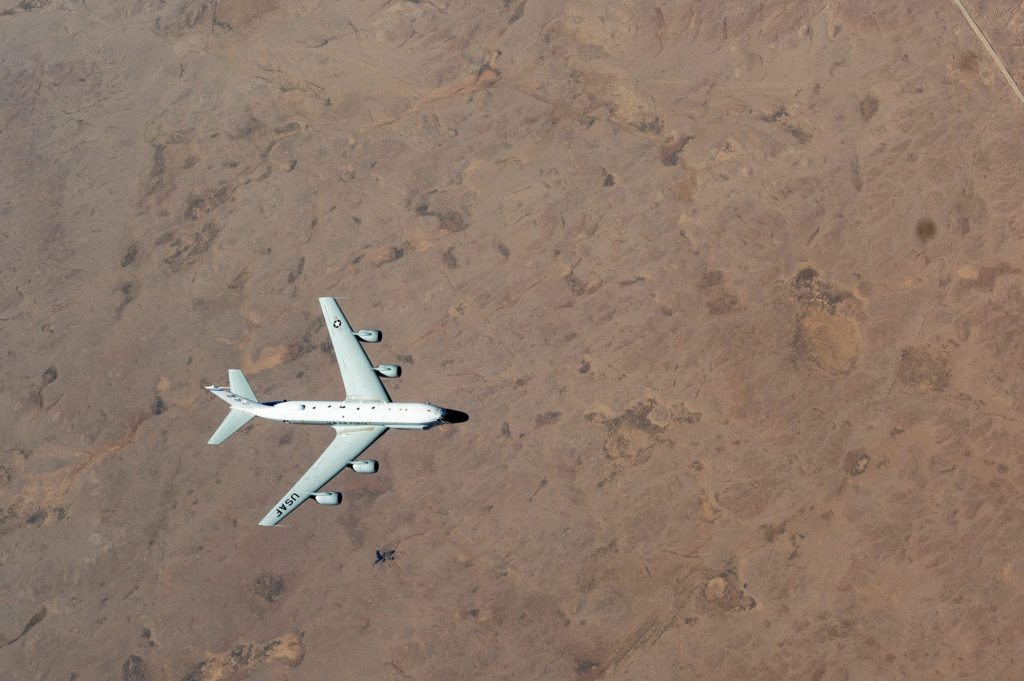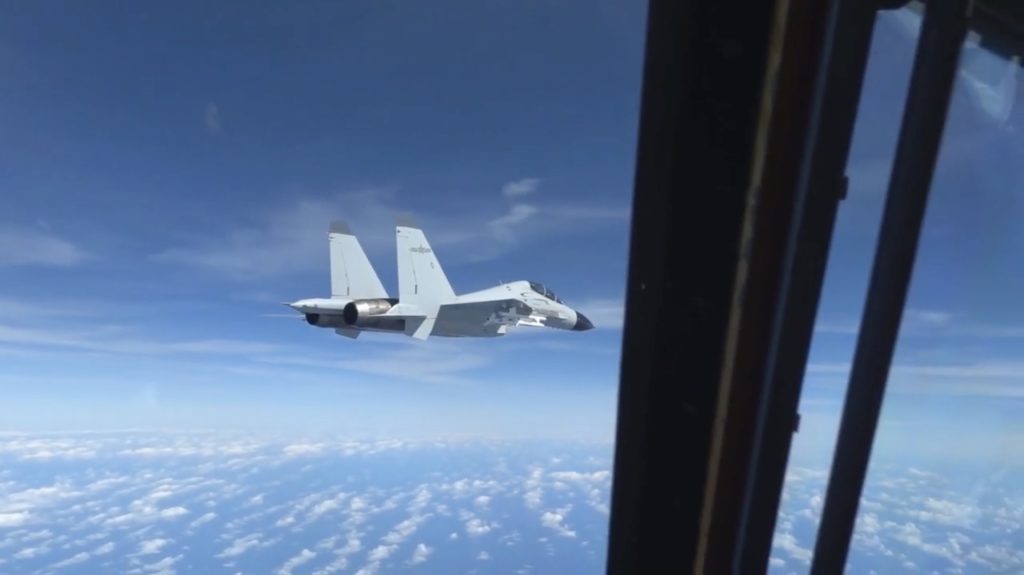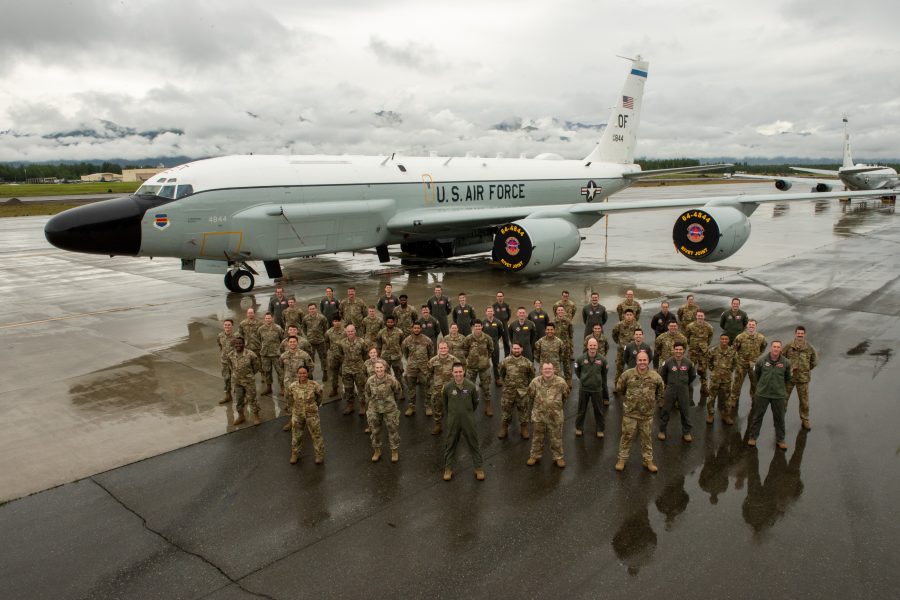The Air Force’s 55th Operations Group is standing up a detachment at Joint Base Elmendorf-Richardson, Alaska. to help launch and recover jets from the RC-135 family of intelligence and reconnaissance platforms as they conduct operations and exercises over the Indo-Pacific.
The detachment is small: less than 10 Airmen and a few contractors, according to a July 25 press release. Ryan Hansen, a spokesperson for the 55th Wing, told Air & Space Forces Magazine there are still a final few steps before the detachment is fully stood-up, but it already has some operational capabilities. By providing aircraft maintenance and systems support for RC-135s, the unit could play a key role as the U.S. military works to enhance its awareness and response times over the vast area.
“Over the past few years we have seen an increase in operations over the Indo-Pacific region,” Hansen said. “This has come as a result of the Pacific pivot and our nation’s continued commitment to our allies in the region.”
Each of the 30 or so aircraft in the RC-135 family of jets performs a unique kind of intelligence-gathering. RC-135V/W Rivet Joints act as mobile listening posts: collecting, analyzing, and disseminating real-time electronic and signals intelligence. RC-135S Cobra Ball jets track and analyze ballistic missile activity; RC-135U Combat Sent aircraft locate, identify, and analyze radar signals; while WC-135R/W Constant Phoenix jets collect samples of the atmosphere to detect nuclear weapons testing. The detachment in Alaska will initially support Rivet Joint operations but over time will support other RC-135 or WC-135 jets as needed.

There are no plans to expand the Alaska detachment or station any of the RC-135s or WC-135s in Alaska on a more permanent basis, Hansen said. The key advantage of Detachment 1 is speed: allowing the 55th Operations Group to respond faster in the Pacific as requirements increase.
“All of our platforms are constantly tasked for worldwide operations,” Col. Derek Rachel, commander of the 55th Operations Group, said in the press release. “Having this location always available and ready will enable us to respond quicker than ever before.”
Detachment 1 is not the 55th’s only geographically-separated unit (GSU). Hansen pointed out that the group has maintained two GSUs at Kadena Air Base, Japan, in the form of the 82nd Reconnaissance Squadron and 390th Intelligence Squadron.
“We’ve relied on that location for some operational taskings while also utilizing Alaska for shorter [temporary duty] missions, etc.,” he said.
Indeed, the 55th Wing also has GSUs at Davis-Monthan Air Force Base, Arizona; Royal Air Force Mildenhall, England; and Naval Support Activity Souda Bay, Greece.
As the only wing in the Air Force operating the RC-135 and WC-135 family of aircraft, “we are constantly tasked by combatant commanders around the globe, so these locations enable us to do so quickly when called upon,” Hansen said. “We plan to use the new detachment much the same way as we have these long-standing locations.
This is not the first time RC-135 Airmen have operated out of Alaska. The jets, many of which were first built in the early 1960s, often flew from Alaska or were temporarily deployed there during the Cold War, the service’s release noted.

Recent headlines testify to the the RC-135’s continuous global presence. In December, one RC-135 Rivet Joint took evasive maneuvers to avoid colliding with a Chinese J-11 fighter jet that came within 20 feet of the reconnaissance plane over the South China Sea, according to U.S. Indo-Pacific Command. A similar incident occurred over the same area in May.
As the new Alaska detachment stands up, RC-135s may return to fly over those areas.
“The new detachment will provide us more flexibility and allow us to expand our operations in response to increased intelligence requirements,” Rachel said. “We’re very excited to see this initiative come to fruition.”





